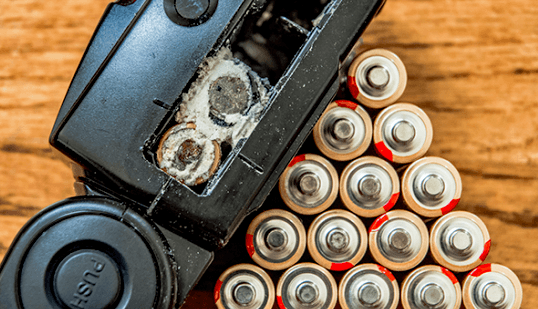Batteroo ReBoost gives a Ni-MH cell a voltage hike

Many electronic devices are designed to operate with primary cells using a nominal voltage of 1.5 V and often do not work well with the slightly lower voltage provided by rechargeable batteries. All that could change by using a Batteroo ReBoost SmartSleeve, which is a thin voltage management and up-converter battery sleeve; it helps save money and protects your devices...
Many electronic devices are designed to operate with primary cells using a nominal voltage of 1.5 V and often do not work well with the slightly lower voltage provided by rechargeable batteries. All that could change by using a Batteroo ReBoost SmartSleeve, which is a thin voltage management and up-converter battery sleeve; it helps save money and protects your devices.
One interesting project on Indiegogo at the moment is the Batteroo ReBoost. The startup is looking for funding to produce SmartSleeves which slip over an ordinary NiMh batteries and provide a voltage boost to deliver 1.5 V to the battery holder terminals. Technical information on the project page is a little skimpy, but idea works by incorporating battery management circuitry (similar to the circuitry included with Li-Ion batteries to prevent deep discharge and regulate the charge cycle) into a sleeve that slips over a standard Ni-MH rechargeable battery. In this case management circuitry does not regulate the recharge cycle so the battery must be removed from the sleeve for charging in a standard charger.
The Batteroo Reboost SmartSleeve circuitry contains a step-up voltage converter, to boost the nominal 1.2 V from the battery to 1.5 V which some pieces of equipment require for correct operation. This means that the equipment will not turn off while there is still a useful amount of charge remaining in the battery, the equipment will function as if it were powered by primary cells. The SmartSleeve’s battery management circuitry effectively disconnects the battery when its output voltage falls below a lower threshold value to protect against deep discharge. Rechargeables work out several hundred times cheaper than primary cells and generate less waste. The SmartSleeve should also protect expensive equipment from the damage caused by electrolyte leakage from neglected alkaline primary cells.
It’s a nice idea, if it works as well as advertised. The lack of information does not inspire trust however. There is no information about the maximum current capability or the unit’s efficiency. For low usage and low-current applications (such as a remote controller or wireless keyboard) it’s questionable whether current consumed by the battery management circuitry will put more of a drain on the battery than the equipment itself. For high current applications heat dissipated in the management circuit may lead to unacceptable increase in temperature. Doubts will inevitably arise when this sort of important information is not published. Maybe the product is still just at the concept stage and not fully developed.
You can back the project for $ 20 minimum, the last time I checked they were well over half way toward the $ 30,000 goal with still a month to go.
One interesting project on Indiegogo at the moment is the Batteroo ReBoost. The startup is looking for funding to produce SmartSleeves which slip over an ordinary NiMh batteries and provide a voltage boost to deliver 1.5 V to the battery holder terminals. Technical information on the project page is a little skimpy, but idea works by incorporating battery management circuitry (similar to the circuitry included with Li-Ion batteries to prevent deep discharge and regulate the charge cycle) into a sleeve that slips over a standard Ni-MH rechargeable battery. In this case management circuitry does not regulate the recharge cycle so the battery must be removed from the sleeve for charging in a standard charger.
The Batteroo Reboost SmartSleeve circuitry contains a step-up voltage converter, to boost the nominal 1.2 V from the battery to 1.5 V which some pieces of equipment require for correct operation. This means that the equipment will not turn off while there is still a useful amount of charge remaining in the battery, the equipment will function as if it were powered by primary cells. The SmartSleeve’s battery management circuitry effectively disconnects the battery when its output voltage falls below a lower threshold value to protect against deep discharge. Rechargeables work out several hundred times cheaper than primary cells and generate less waste. The SmartSleeve should also protect expensive equipment from the damage caused by electrolyte leakage from neglected alkaline primary cells.
It’s a nice idea, if it works as well as advertised. The lack of information does not inspire trust however. There is no information about the maximum current capability or the unit’s efficiency. For low usage and low-current applications (such as a remote controller or wireless keyboard) it’s questionable whether current consumed by the battery management circuitry will put more of a drain on the battery than the equipment itself. For high current applications heat dissipated in the management circuit may lead to unacceptable increase in temperature. Doubts will inevitably arise when this sort of important information is not published. Maybe the product is still just at the concept stage and not fully developed.
You can back the project for $ 20 minimum, the last time I checked they were well over half way toward the $ 30,000 goal with still a month to go.
